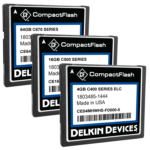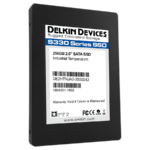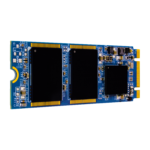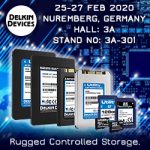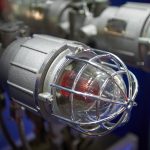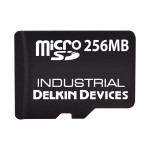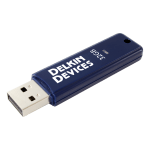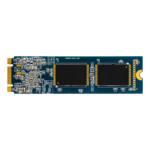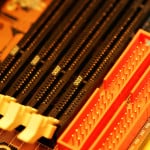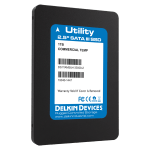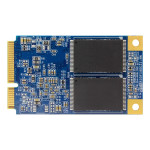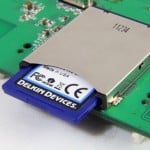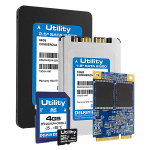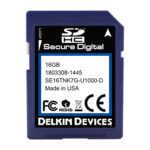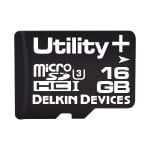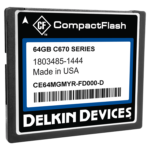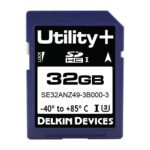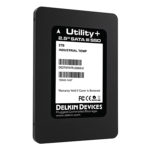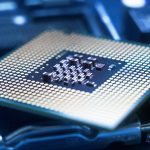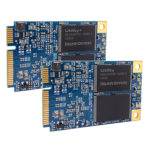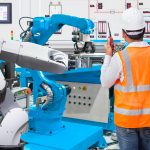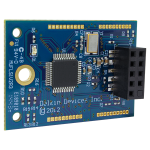Author Archives: Delkin Industrial
A Look at Networking Applications Embedded Systems
In today’s world, devices seldom exist in a vacuum. Instead, they are interconnected via vast, complex networks. With embedded systems, this means not only performing a single task within a device, but also having the capacity to connect and communicate with other systems and devices. Typically, this involves using a BUS or Ethernet connection via embedded networking protocols like CAN, I2C, serial BUS connections, sensor, and Component. Understanding both embedded systems and networking applications will help you get the...
Read More
Read More
FAQs about Medical Data Storage
With health organizations increasingly relying on electronic records rather than paper charts for all of their tasks, data storage is an ever-growing sector of the embedded storage market. The need for health organizations to store digital data has grown alongside the use of medical devices that also require embedded storage for patient care information. Data storage has evolved dramatically in recent years, and it is possible for very small, embedded systems to provide massive amounts of secure data storage....
Read More
Read More
Answering Questions about Conformal Coating
When you invest in embedded storage for your device, you want to feel confident that your information is secure and that your storage will have the longest lifespan possible. One of the tools we offer at Delkin to make this happen is conformal coating. Because we manufacture all of our embedded storage products on site at our facility in California, it is easy for us to accommodate a range of customizations, including requests for conformal coating. There are several...
Read More
Read More
A Look at MLC Compact Flash
If you’ve used portable electronic devices at any time since 1994, chances are that you’ve used Compact Flash—also known as CompactFlash or CF. CompactFlash was one of the earliest forms of flash memory on the market, and it is one of the most successful. Despite the fact that it has been around for decades, CF remains a popular form of flash memory for a wide range of devices, particularly devices that store high-quality images or videos. CF is available...
Read More
Read More
Exploring the SATA 2.0 SSD
Serial ATA, more commonly known as SATA, is a popular interface used in both hard disk drives (HDDs) and solid state drives (SSDs). SATA 2 SSDs are solid state drives that use the SATA 2.0 revision. Though SATA 2.0 is not the newest version of the SATA interface, it is still used as a legacy product in a large number of commercial and industrial applications. Here is a closer look at SATA 2 SSDs and what to expect from...
Read More
Read More
Spotlight on M.2
M.2 is a small, rectangular solid state drive (SSD) designed to be used in small form factor devices. It offers the power and reliability of an SSD in a size that makes it compatible with even the smallest devices. M.2 is a top pick of designers and OEMs who need a drive that doesn’t sacrifice power and reliability for the sake of size. This SSD format has become increasingly popular over the years since its introduction, thanks to the...
Read More
Read More
What Are Industrial Applications?
Electronic applications are designed to be used by a wide array of people and industries. Computers and smartphones, for instance, are typically designed to be used in the consumer and commercial markets, in which individuals use devices for personal purposes. Industrial applications are different. These devices are used in a variety of industries, often for uses that have implications for an entire business or a large number of people. For example, industrial applications used in airplanes may help to...
Read More
Read More
Delkin Devices at Embedded World | Feb. 25-27 in Nuremberg, Germany
Discover the newest in Industrial Flash Storage Solutions by meeting with Delkin Devices at Embedded World February 25-27 in Nuremberg, Germany. DELKIN DEVICES Hall: 3A Stand No: 3A-301 Looking forward to seeing you there! ORDER DELKIN INDUSTRIAL FLASH STORAGE TODAY through our distribution partner Newark. For Europe Contact Our Partner Farnell ...
Read More
Read More
Industrial microSD Flash Storage Used in Security Control and Lighting Systems
Like most parts of modern life, security and lighting systems have gone high-tech. Whether for home users with residential security needs or commercial or government locations that contain highly sensitive information and materials, today’s security and lighting systems involve much more than a simple alarm that sounds when a boundary is breached. Today, video cameras, smart lighting, and other systems not only have to operate flawlessly, but they also have to keep data safe and secure. In addition to an...
Read More
Read More
Delkin’s Rugged Storage Fits the Bill for Nanosatellites
If you think that your application requires rugged storage devices, imagine how reliable an embedded memory solution has to be to survive a trip to space. That extreme environment is exactly what one Delkin customer was facing. Pumpkin Inc. is a San Francisco-based company that has been making cutting-edge products for the space industry since 2000 including nanosatellites. The products that they make are launched into orbit aboard space satellite stations, which means that they must withstand intense atmospheric...
Read More
Read More
Technical Success Story: The Value of SD Card Customization
One of the reasons why so many of Delkin’s clients are repeat customers is because of the way we work with each client to find the right custom embedded storage for their needs. Oftentimes, this can include experimenting with customizations to ensure that the embedded memory solution that a client chooses works as efficiently as possible in their devices. Recently, Delkin went through this very experience with a frequent customer. This customer had an application that they needed to expand...
Read More
Read More
Embedded OS: Windows vs. Linux
The August 2019 announcement by Microsoft that they would no longer be supporting Windows Embedded 2009 or Windows Embedded POS Ready 2009 left many OEMs, designers, and industrial users questioning what decisions they should make about embedded operating systems (OS) in the future. Would it be better to opt for another Windows OS, or should they rewrite applications to use a completely different OS, such as Linux. When comparing Windows and Linux for embedded operating systems, there is no...
Read More
Read More
Write Amplification in True Embedded Applications
What is write amplification? Write amplification, or WA, refers to the phenomenon that occurs in flash memory and SSDs in which the amount of data written to your memory device is greater than the amount of information you are actually trying to store. Measuring WA is usually done in ratio format, comparing the number of writes that are committed to the flash memory to the number of writes that are coming from the host system. In other words, WA is...
Read More
Read More
SMART microSD Cards Explained
The trends in tech design are pushing in two seemingly incongruent directions: devices are becoming smaller than ever before, but they are also becoming more powerful. This means that the embedded memory used in them has to be small in size, but big in speed and capability. Enter the microSD card. As the smallest version of Secure Digital cards available, microSD cards are ideal for small form factor devices that require large and reliable storage capabilities, even in challenging...
Read More
Read More
High Capacity Flash Drive FAQs
With solid state drives (SSDs) dominating the market for embedded storage and external hard drives maintaining popularity for holding massive amounts of data outside of a system, it’s easy to overlook the role of USB flash drives. Though USB drives were once extremely common, many people have stopped considering them when they need portable storage. The reason that they get overlooked so often is that many users assume that they can’t get the storage capacities they need from a...
Read More
Read More
What Is an M.2 SSD?
Solid state drives, or SSDs, have changed the way that designers and engineers think about embedded storage drives. While hard disk drives, or HDDs, once ruled, SSDs have since become the gold standard thanks to their ability to provide greater reliability, speed, and data security. However, standard SSDs are often too large for many of today’s small devices. The need for smaller SSDs led to the creation of the M.2 SSD. M.2 SSDs are smaller than even the popular...
Read More
Read More
Memory Electronics: Selecting the Right Memory for Electronic Applications
When building an electronic application that requires embedded storage, one of the biggest decisions designers face is selecting the right memory. Embedded memory has a major impact on the overall functionality and performance of an electronic device, so selecting the right fit is crucial. Because there are so many different kinds of embedded memory, the right solution is not always obvious. It helps to work with a flash memory manufacturer who can guide you through the process of selecting...
Read More
Read More
FAQs about SSD Utility Grade
SSDs, or solid state drives, are used in a huge array of industrial and commercial devices. As such, SSDs come in various grades and capacities to meet the needs of different designs and uses. Often, the choice of an SSD utility grade is a simple one. For industrial devices used in rugged operating conditions with extreme temperatures, shock, and vibration, using industrial grade SSDs with SLC flash is typical. For consumer products—where budget and capacity are often the leading...
Read More
Read More
What is a 32GB mSATA drive?
A 32GB mSATA drive is a solid state drive that uses the SATA interface. It is a common drive choice for netbooks, laptops, and other portable devices. This is thanks to its small size and low power consumption, as well as the ease of SATA compatibility. This form of mSATA drive is available with both SLC and MLC flash for industrial applications. Delkin’s industrial 32GB mSATA drive features extended temperature ranges and a high tolerance for shock and vibration. SATA...
Read More
Read More
Memory Manufacturers- Delkin Devices
Contrary to popular belief, all memory manufacturers are not created equal. Even with memory cards that have standardized specifications, like Secure Digital (SD) cards, there are differences between manufacturers in terms of quality, service, and grade of memory offered. At Delkin Devices, we’re accustomed to working with customers with unique embedded storage needs, including those with needs for industrial storage that can tolerate rugged environments without any loss of functionality. Our team is also adept at helping clients find...
Read More
Read More
Conformal Coating Benefits
Memory cards and SSDs are often exposed to environmental conditions that could cause damage, such as moisture and dust. Even the most stringently produced embedded storage products are vulnerable to damage from this kind of exposure. The longevity of the memory device could be impacted, or damage could lead to a complete failure of the device. Fortunately, there is a way to protect the embedded components and delicate circuitry: conformal coating. There are many conformal coating benefits to consider....
Read More
Read More
Industrial microSD for Conference Communications Systems
Conference communications systems have rapidly become high tech in recent years. Although audio and visual technology have always played a role in conferencing, today, people can attend the same conference from far corners of the world. Many technology organizations have to be able to view presentations, weigh in on conversations, and participate as though they were present. This evolution of conference communications systems has changed the way that companies are doing business, but it has also created the need...
Read More
Read More
Choosing Between Solid State Storage Companies
The world of embedded storage has evolved quickly alongside devices that are becoming more powerful and smaller in size. Once dominated by hard disk drive storage, in which information was written on a spinning, magnetic disk, most embedded storage now comes in the form of solid state storage. Today’s computer systems can move faster than hard disk drive storage can provide data. The switch to solid state storage, or SSS, resolves this problem while offering many other advantages. However,...
Read More
Read More
What Is a Secure Digital Card?
If you have used a digital camera, video camera, smartphone, or music player in the past 20 years, you have almost certainly used a device with a Secure Digital card. These cards offer easy-to-install embedded storage for devices that require high-capacity, reliable memory. Secure Digital, or SD, cards are among the oldest memory devices on the market, but that doesn’t mean that they are outdated. Thanks to continual updates and a number of redesigns, secure digital cards are as...
Read More
Read More
Technical Success Story: Benefits of 3D NAND
Flash memory and solid state drives (SSDs), especially 3D NAND, have revolutionized the technology industry and changed the way that devices—from industrial applications to consumer products—are designed. However, there is a challenge with SSDs: storage capacity. Designers moved to SSDs because of the benefits they present over hard disk drives, or HDDs. With SSDs, because there are no moving parts, the drives are less prone to failures caused by mechanical malfunctions. They are also faster, since they don’t have...
Read More
Read More
Industrial Flash Storage Market 2020 Predictions
As with most areas of technology, the flash storage market has evolved quickly over the past few years, with new trends emerging at lightning-fast speed. The market is expected to maintain high levels of growth and fast speeds of change in 2020, particularly in the industrial subset of the market. Whether you’re an OEM, an engineer, a designer, or a tech investor, understanding industrial flash storage market predictions can help you plan for a successful year. Here’s a look...
Read More
Read More
Facts about the 16GB Industrial microSD Card
SD, or Secure Digital, cards were introduced to the market in 1999. Since then, thanks to a range of updates and redesigns, they have remained an in-demand storage format, particularly for mobile devices. One of the reasons why SD cards have remained popular is that they offer reliable storage in a small form factor. However, as devices have become increasingly small, the need for an even smaller form of storage has grown. This is where the microSD card enters...
Read More
Read More
64GB CompactFlash Memory Card: What You Need to Know
CompactFlash memory cards are among the oldest memory cards on the market. However, the fact that they have been around since 1994 does not make them obsolete. Thanks to ongoing upgrades over the years, CompactFlash cards play as big a role in the embedded flash storage market now as they did when they were first introduced. They are available in a variety of capacities and flash grades, making them a common choice for both consumer and industrial grade devices...
Read More
Read More
32GB Industrial SD Card
If you have ever used a portable device, such as a digital camera or mobile phone, there is a good chance that you have used a device with an SD card. SD, or Secure Digital, cards are an extremely popular form of embedded memory for both consumer and industrial applications. The cards are designed according to standards set by the Secure Digital Association. This allows designers and engineers to know exactly what to expect from an SD card, no...
Read More
Read More
Taking a Closer Look at 2.5 SSD SATA
Despite being a legacy product, 2.5 SSD SATA drives are among the most popular drives on the market today. There are many reasons why 2.5 SSDs with the SATA interface are popular, including the variety of storage capacities in which they are available. Many devices that were originally designed with a 2.5 SATA HDD have been configured for use with a 2.5 SATA SSD. Those that have not could almost certainly benefit from SSD compatibility. Why are 2.5 SSDs...
Read More
Read More
Rugged Condition Flash Storage
Flash storage is found in a huge number of devices and applications, from basic laptops used by consumers to high-level instruments in airplanes that are critical to flight safety. Because flash storage is found in so many different devices, it is not uncommon for flash memory to be used in rugged conditions. Unless flash storage has specifically been designed to withstand extreme operating environments, these rugged conditions can often cause issues with flash storage that result in data loss....
Read More
Read More
What Is QLC Flash?
When it comes to flash technology, there is an ever-present push for more storage capacity with lower ownership costs. For many years, the answer for OEMs and engineers looking for the highest possible storage capacity was TLC NAND flash. Now, TLC flash is quickly being replaced by QLC flash. QLC flash offers huge capacities at low costs, but there are downsides. So, what is QLC flash? Could it be the right choice for your device? Here is what you...
Read More
Read More
M.2 2280 Explained
Designers and OEMs who are considering their options for SSDs, or solid state drives, are likely to encounter the M.2 standard. This standard was designed to provide powerful data transfer speeds in a small form factor SSD. It is useful for devices with constrained space, such as mobile applications, laptops, and other small products. The M.2 format is an ideal alternative to mSATA, which is widely popular but has speed limitations. M.2 2280 refers to a specific size of...
Read More
Read More
SSD Utility Cards
For designers of industrial applications, there are a few factors that are critical when it comes to storage. One is finding a storage device that is reliable and won’t put critical data at risk. Another factor is ensuring that the storage system will not lose any reliability or functionality when faced with challenging operating conditions, such as environments with a significant amount of shock and vibration or in which temperature extremes are possible. In addition, industrial applications require rapid...
Read More
Read More
What Is a CPU?
At the core of any computing system is the central processing unit, or CPU. Many people mistakenly believe that the CPU is the computer itself, but it isn’t. Instead, you can think of the CPU as the brain that helps the computer perform all of the functions that it needs to. Essentially, everything a computing device does, from storing data to running operations, starts with and is facilitated by the CPU. The embedded memory system in your computing device...
Read More
Read More
Get the Facts about Industrial M.2 SSD Options
SSDs have replaced HDDs in terms of popularity in the majority of new device designs for many different reasons. As part of this change, there has been a growing need for faster SSD interfaces. M.2 SSDs solve the challenging problem of combining powerful performance with a small form factor drive. Industrial M.2 SSDs that are specifically designed for use in rugged conditions offer an important solution for devices in which a drive with a high degree of reliability, tolerance...
Read More
Read More
What Is e-MLC?
Multi-level cell flash, or MLC, is a commercial grade of flash memory used in a variety of different kinds of storage devices. This kind of flash is less reliable than single-level cell flash, or SLC flash, which is used in many kinds of industrial grade storage devices. Some developers choose MLC flash for industrial applications for a variety of reasons, including budgetary concerns and the need for enhanced capacities. However, for these developers, there is actually a middle ground...
Read More
Read More
Taking a Closer Look at SSD SATA 3
If you’re looking for a drive for a new device, chances are that you have encountered SSDs with SATA 3 technology. These drives offer the most reliable functionality and fastest SATA interface speeds available, making them a natural fit for industrial applications. Why should you consider an SSD instead of an HDD for your device, and how does SATA 3 fit into the picture? Here is what you need to know about SSD SATA 3. What is the difference between...
Read More
Read More
Examining the Benefits of SSD mSATA
Solid state drives, or SSDs, are more reliable than their hard disk drive, or HDD, counterparts. In addition, they typically offer a longer lifespan. SSDs with mSATA interfaces adhere to the design specifications set out by the Serial ATA organization. Because SATA is such a familiar and widely used interface, mSATA SSDs are easily compatible with a variety of device designs. As such, they are extremely popular with device designers and OEMs. Although mSATA is not the only interface...
Read More
Read More
Flash Storage Solutions in the IoT/IIoT
Whether you notice it or not, the IoT, or Internet of Things, is changing the way you live and the way you relate to the world around you. The standalone items you use daily that used to work independently are increasingly interconnected, in an increasingly complex and constantly growing digital network. According to researchers, billions of objects will be connected to each other on a digital level within two years. Continue reading for an overview of flash storage solutions...
Read More
Read More
Flash Memory Solutions for Factory Automation
Modern factories no longer rely on an assembly line of workers to get jobs done. Instead, automation is the key to efficient operations. New automation systems are constantly being added. Thanks to the evolution of the Industrial Internet of Things, or IIoT, automation systems are increasingly interconnected and interdependent. Flash memory plays a key role in this evolution of automation. Because factory environments often have rugged conditions with high levels of shock and vibration, as well as temperature extremes,...
Read More
Read More
Identifying the Best SD Card for a Specific Application
At Delkin Devices, one of the most frequent questions we face from customers is about the strategy for choosing the best SD card. Because host applications can vary so greatly, there simply is not a one-size-fits-all solution that works in every situation. Our customer applications team devotes a great deal of time to working individually with customers who are in the market for an industrial SD card. We ensure that they end up with a card that works as...
Read More
Read More
Understanding PCIe
If you’re in the market for embedded storage, one term you may encounter frequently is PCIe. PCIe stands for peripheral component internet express and refers to a connection interface for internal devices in a computer system. PCIe consists of expansion slots that can be found on the motherboard of a computer. These slots accept expansion cards that are designed with PCIe technology. In the past, ISA, AGP, and PCI were the most common connection interfaces in computing systems. However,...
Read More
Read More
Transportation Applications Embedded Systems
Embedded systems play a large role in transportation applications. They are used for a variety of purposes, from navigation to system performance and operational functions. However, the nature of transportation applications embedded systems is that they are used in operating conditions that are rugged and demanding. As such, any embedded system that is used has to be able to tolerate this kind of environment without any loss of functionality. Any failure of transportation applications could be extremely disruptive, and...
Read More
Read More
Memory Electronics
Memory electronics—internal or external storage devices for computing systems that use electronics to record and read data—have largely replaced magnetic tape-based memory devices, like hard disk drives. Electronic memory is at the core of flash memory, which is used in a huge number of different devices and applications. These include everything from consumer cellphones and cameras to high-tech, industrial systems in transportation and healthcare that handle critical data. The two most common forms of electronic memory are volatile and...
Read More
Read More
Spotlight on 3D NAND Flash
In the future, flash memory may be scaling vertically instead of horizontally. 3D NAND flash is a form of flash memory that focuses on increasing capacities without increasing the device size laterally. There are cost-saving benefits to 3D NAND flash designs, which makes them even more attractive to customers. However, alongside the benefits of 3D NAND flash, there are also some challenges, which means that the higher capacity levels available with 3D NAND flash may not be worth the...
Read More
Read More
Energy Applications Embedded Systems
Embedded systems are hardware and/or software systems inside of larger computing systems that perform a dedicated task or function. When it comes to energy applications, embedded systems are crucial. Embedded memory in energy applications not only has to be reliable, but it also has to be able to tolerate rugged conditions, including high operating temperatures. Failure of data storage in an energy application is not an option, as such an outage could have far-reaching implications for entire communities. Energy...
Read More
Read More
FAQs about USB Embedded Systems
When most people think of USBs, they think of the familiar external flash drives. These are easily portable and can be carried from one system to another, plugging into the interface of the host system through an external hub. This kind of data storage is extremely popular because it is so widely compatible and provides such a convenient method of transferring data from system to system. However, USB storage doesn’t have to be external. USB embedded technology combines the...
Read More
Read More
Taking a Closer Look at Embedded Memory Design
If you use an electronic device of any kind, you are almost certainly using a system with embedded memory. Embedded memory simply refers to memory systems that are inside of devices and incorporated into the larger operating system. When embedded memory designs are industrial grade, they are rugged enough to function in extreme operating conditions. There are multiple potential formats for embedded memory design, allowing developers and engineers to select the best fit for their products. Here are the...
Read More
Read More
Why ELC Products Are Essential for Industrial Devices
For industrial devices and applications, a long lifecycle for flash memory is important for many different reasons. Without a long lifecycle, memory will fail too quickly, which will dramatically increase the cost of keeping devices functional and up to date. Frequent memory failures can also lead to unexpected failures in the field, which can have far-reaching implications for devices used in transportation, healthcare, automation, digital communications, and more. These failures will put an additional financial burden on users that...
Read More
Read More
 Login
Login Register
Register





